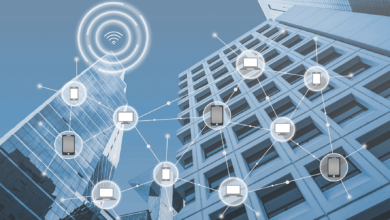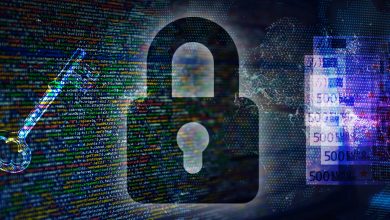Document Security Solutions – Encryption, DLP, ERM, IRM, or DRM?

The truth is, we know that security has been and will continue to be a strategic concern for companies as they continue to work to protect their business and customers.
Whether a company is doing web-based transactions, capturing customer information in the field, or submitting large datasets for evaluation, security has become a top priority.
Companies are turning to a broad range of security tools to address these concerns. Not just those that help in the prevention and detection of attacks but also those that enable information to be analyzed and leveraged in new ways to improve business efficiency, competitive advantages, and overall security posture.
This area is driven by the need to reduce the “digital footprint” that can have the most significant impact in preventing attacks. Whether by incorporating encryption, keeping records in encrypted form, creating data mining protocols, or implementing backup plans, companies are working to ensure that their digital assets remain secure.
Just how important are digital assets to a company? To ‘secure’ documents, four types of securities are broadly used: Data Leakage Prevention (DLP), Encryption, Digital Rights Management (DRM) and Enterprise Rights Management (ERM) or Information Rights Management (IRM).
Data Leakage Prevention (DLP)
Data leakage is the leakage of information outside of a company. This can be discovered by analyzing data to understand what the data contains and how it is being used.
DLP is a collection of technologies that protects information and secure sensitive data from leaving the organization. With DLP technology, a business can understand its data usage better, prevent data leakage, and ensure information remains protected.
A DLP system looks for the relationship between data assets and their information. In other words, it learns about the relationship of the data with its counterpart, “at rest.”
DLP stops confidential information from getting outside the organization and encrypts confidential data. Data Leakage Prevention systems employ tagging, security key and timestamping techniques, and encryption schemes such as PKI.
Encryption
Creating encryption keys and implementing the appropriate key management policies are very important to maintain confidentiality and integrity of the protected content.
As mentioned above, encryption has long been used to secure sensitive information. When data is encrypted, it becomes unreadable to someone who doesn’t have the key. Encryption helps protect valuable information by creating a “no-go” zone.
Data Privacy Protection
Digital Privacy Protection (DPP) is the protection of information by limiting its access and scope to maintain a protected individual’s privacy.
Enterprise Rights Management (ERM)
ERM is a concept by which an enterprise controls and secures the distribution of its information within the enterprise by using controls to prevent document misuse.
Since enterprises have to share data with other companies, ERM can only increase security and autonomy if the third party uses the same system. It can help by controlling the distribution of sensitive information.
Digital Rights Management (DRM)
DRM utilizes both encryption and licensing controls to secure digital content and control how it is used. As digital media such as MP3s, movies and software are increasingly more accessible, media companies also see a massive increase in piracy.
DRM is considered by many to be one of the most advanced methods of securing data and information. In other words, it’s the most reliable form of data security in the electronic field today. DRM utilizes a three-part process to create security policies, adjust access to data, and manage digital rights.
The first process creates security policies, including the specific authorizations to access and the specific scope of storage. These policies can be further customized to create different levels of access to a file, depending on the user’s characteristics and history.
The second process integral to DRM is called DRM Copy Protection (DCP), which requires that users be authenticated to the protected digital content in the first step. These credentials or keys can either be added to an existing digital file or as a digitally signed certificate.
Here, DRM utilizes users and roles to designate users and roles, such as the authorized reader. This enables control over the user’s ability to save, print, and decrypt files.
The third step is the implementation of mechanisms to manage digital rights, which involves concepts such as:
- An access key.
- Access control lists.
- Licensing mechanisms.
- Digital rights management policies.
- Digital signature and encryption.
DRM and the Digital Document
Content is becoming more and more accessible on the internet. Over the past few years, many people have transitioned to electronic files. Whether you use traditional paper documents as scanned images, email messages, web pages, or video presentations, these digital files are far more accessible and understandable than their traditional counterpart.
This accessibility opens the door for the possibility of a company’s digital content being viewed by hundreds of employees, all at the same time. Previously, the data would only be accessible to the employees with specialized permission. Still, now the capabilities of cloud technology have made accessing that information easy for anyone on the internet.
In the event that an employee wants to view a document on a secure system, however, this option is usually not available. This is because DRM ensures that only authorized individuals have access to the content, preventing the digital file from being shared.
DRM also covers the creation of digital signature and encryption certificates. This enables the organization to verify the authenticity and integrity of the digital file. Any authorized personnel will be able to audit the digital file to ensure that the signature and encryption certificates are correctly set and are available for trusted use.
Why You Need PDF DRM
PDF DRM provides the tools necessary to control digital content distribution, reproduction, and distribution. An organization’s employees can create new files, distribute, share, or use digital content in different formats. In addition, the organization can make private digital copies that are not accessible to the public.
When companies apply Digital Rights Management to their digital content, it becomes an effective method of protecting the company’s ownership and intellectual property while allowing safe content transfer.









